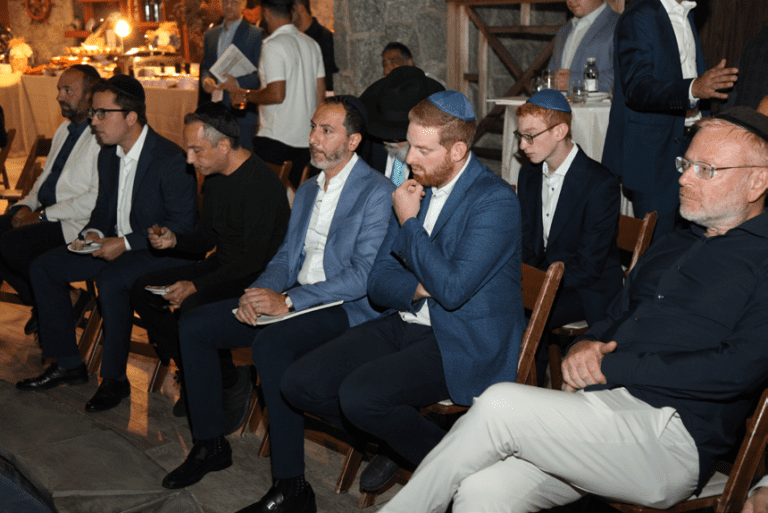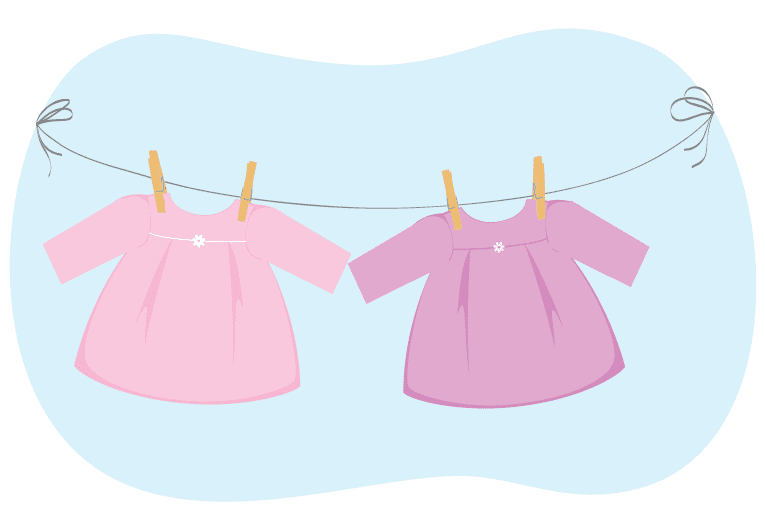Victor Cohen
If you did not make it to the Park Avenue Synagogue (Congregation Ohel Simha) fundraising event this past August 31st in Long Branch, NJ, you missed out on something special. The event, dedicated to raising funds for the synagogue’s expansion, was hosted in the beautiful backyard of Lauren and Ike Levy.
An Evening to Remember
Everyone who attended was warmly greeted by the former shul president, Michael Fallas, who presented each person with a beautiful book about Ohel Simha, detailing its history and highlighting the reasons for its needed expansion.
As the guests entered they were treated to the music of a live band, led by renowned hazzan David Shiro. The lovely scenery and twinkling lights made for a festive atmosphere. No community event is complete without special food, and attendees were not disappointed, as the bountiful spread of different delicacies were pleasing to every palate.
The he program opened with a special award presented to Ike Levy, the shul president. Ike was honored for his “unparalleled leadership, mastership, and dedication” to Ohel Simha’s expansion project.
Inspiring Speeches
The speeches and video highlighted the importance of the expansion project, the pressing need to accommodate the growing numbers in the shul, and the importance of giving back to the community.
The first speaker was Rabbi Meyer Yedid. He spoke about hearing a bat kol, a Heavenly voice. There have been individuals who were able to pick up on a bat kol and acted upon that voice, to build and to support our community however they could. Rabbi Yedid said, “There are some people out there, special, great people, that get involved. They don’t just know what’s going on, but make what’s going on.” Rabbi Yedid noted that the night was not about a specific need in the community that would serve only specific people. Rather, the event was about Ohel Simcha, which serves the entire community.
Rabbi Yedid then spoke about the perek in Tehillim, “Hanukat Habayit” for the Beit Hamikdash, David Hamelech composed this psalm although he himself did not build the Beit Hamikdash. How could he write a psalm celebrating something that was not yet built? Rabbi Yedid answered that David did the very most he could, in terms of creating the blueprints and securing the location. If you do the most that you can for a project, it is as if you yourself finished it. It is as if it became yours. “The Beit Hamikdash was named after a man who wasn’t even alive when it was complete. Why? Because he did everything he could while alive to make it complete.”
Rabbi Yedid concluded with praise for the Sephardic community, which is growing in both quality and quantity. He emphasized the importance of becoming involved now, and doing so in the best way that you can, not just for yourself, but for your children. He asked those gathered, “What prouder thing could we say to our children than we built the building?”
Rabbi Shmuel Choueka, the next speaker, smiled as he spoke of the shul as a space that is always bustling, both night and day. He said, “The parking lot is jammed. If I come in the morning at 6am I’m late!”
Rabbi Choueka spoke about the nature of kedusha. He quoted from the gemara, saying that if you made part of something holy, then the holiness spreads through the object and envelops it. So too, with the community, kedusha can spread out from a single point and ripple through everyone and everything it surrounds. This highlighted the importance of what Ohel Simcha is fundraising for. How much greater would the community be overall if Park Avenue could expand and exude more kedusha? It would benefit everybody.
Book Dedicated to Ohel Simha’s Past and Future
Many in attendance commented on the inspiring book that was handed out. Included was the beautiful story behind the founding of the Park Avenue Synagogue. In July 1989, four sons, Mal, Eddie, Jack, and Mike Mamiye a”h, were looking to honor the memory of their beloved mother, Simha Mamiye Dabbah a”h. They transformed the local minyan into Congregation Ohel Simha.
With Gd’s help, the community flourished and Park Avenue Synagogue has become the thriving center of Torah and prayer that it is today. The book included some of the history of the Sephardic community, and noted the reverence the community has for our rabbis and the important role they play.
The Legacy Wall
The book also describes Park Avenue’s newest initiative to honor community rabbis – The Legacy Wall. “Through the Legacy Wall we pay homage to our revered Rabbis who have guided us and nurtured us, ensuring that their impact endures for generations to come. It will serve as a testament to the enduring spirit of our community and our commitment to preserving our heritage.”
The Legacy Wall rabbis include Rabbi Avraham Hamra, Rabbi Yom-Tov Yedid, Rabbi Jacob S. Kassin, Rabbi Shaul J. Kassin, Rabbi Hacham Baruch Ben-Haim, Rabbi Shlomo Diamond, Rabbi Hacham Sion Maslaton, and Rabbi Shmuel Choueka. These esteemed rabbis have helped to shape and support our community. Their guidance was critical for the community as it grew and prospered. The Legacy Wall is a fitting tribute and a show of sincere hakarat hatov.
The book closes with several pictures of what will be in the future, with Gd’s help – from a new social hall to a larger Torah Center, and even a ladies mikveh.
Final Speech and Conclusion
The final speaker was Ike Levy. He spoke about the practical aspects of the expansion project. He said Ohel Simha has “no other option other than to expand the building.” An expansion will allow the shul to serve the growing community and the growing interest in learning Torah. Ike discussed the next phase, which will be an expansion of the learning room and the creation of a second floor to ensure that their morning and night programs could keep growing. The community is growing and Ohel Simha is dedicated to meeting the needs of the community. He noted, “We’re a shul that accommodates the entire community.”
After Ike spoke, the evening concluded with an inspiring, beautifully done video.
People left with a sense of achdut, and with a feeling of increased commitment to support Ohel Simha. Despite the incredible amount of hard work that went into the event, Ike’s wife, Lauren, said simply, “It’s an honor to host this beautiful event for the benefit of the shul.” Certainly, those in attendance felt honored to participate.












